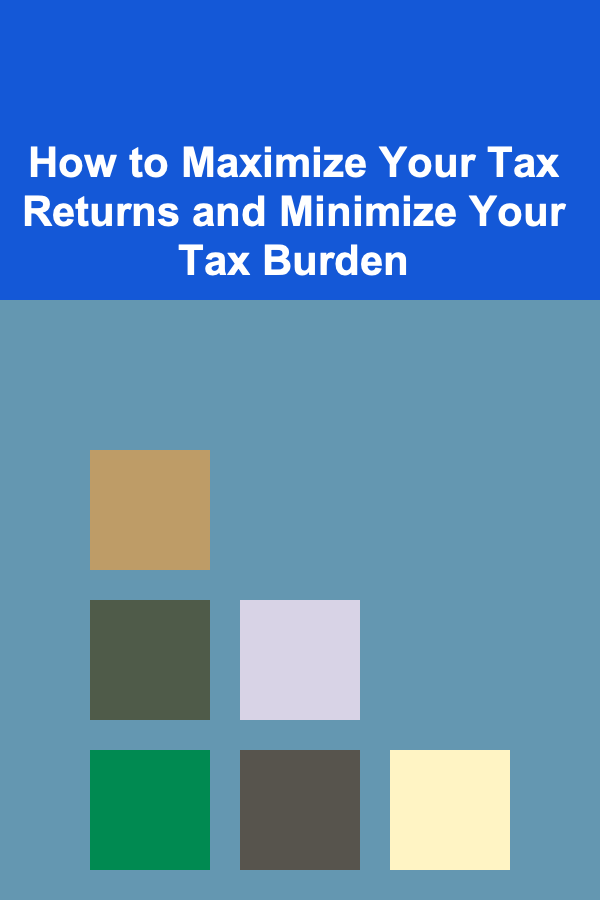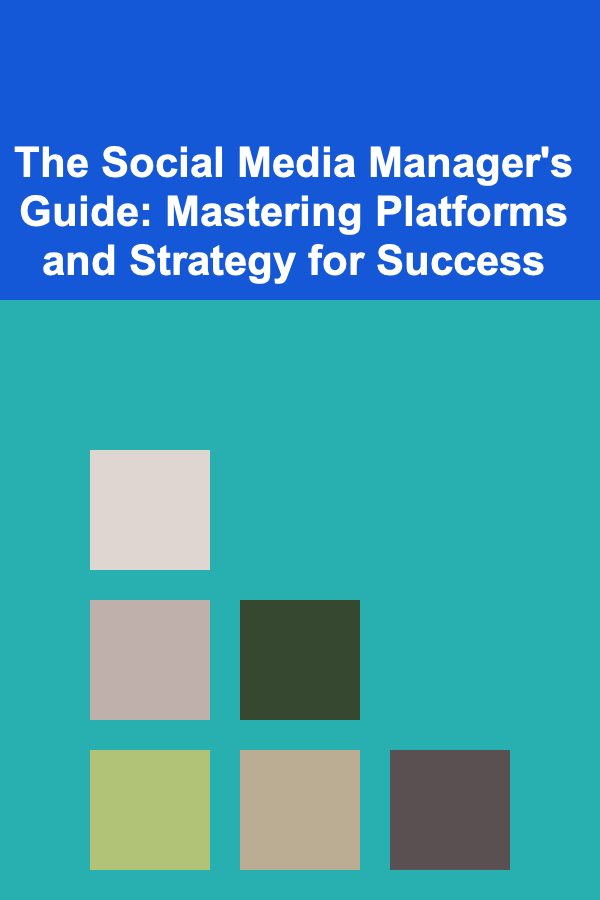
How to Stock Up on Baby Clothing for the First Year: An Actionable Guide
ebook include PDF & Audio bundle (Micro Guide)
$12.99$7.99
Limited Time Offer! Order within the next:

Becoming a parent for the first time is an exciting, overwhelming, and life-changing experience. One of the most important tasks before your little one arrives is preparing everything they'll need in the first year, and baby clothing is at the top of that list. While it may seem straightforward, knowing how much to buy, what types of clothing are essential, and how to budget for it all can be tricky. In this guide, we'll walk through how to stock up on baby clothing for the first year with a practical, budget-friendly, and thoughtful approach.
Understand the Basics: What Types of Baby Clothing Do You Need?
When preparing for a newborn, it's important to recognize that babies grow quickly. What fits one month may not fit the next, so the clothing you buy needs to accommodate rapid growth. Additionally, babies experience a lot of changes during their first year, which means different types of clothing will be required at different stages.
A. Newborn and 0-3 Months
In the first few months, babies will mostly sleep, eat, and grow. Their clothing should be comfortable, easy to put on, and practical for frequent changes. You'll want to focus on:
- Onesies or Bodysuits: Soft, cotton onesies are a staple, and they're perfect for layering. They are easy to put on and take off, and they help keep diapers in place.
- Sleepers: These one-piece outfits with zippers or snaps are great for bedtime. They make nighttime changes easier and ensure your baby stays cozy.
- Swaddles or Sleep Sacks: Swaddling helps babies feel secure and sleep better. Look for soft, breathable materials like cotton or muslin.
- Hats and Mittens: Babies lose heat from their heads, so hats are essential for warmth in cooler weather. Mittens will prevent scratching.
B. 3-6 Months
At this stage, babies begin to be more active, so clothing needs to offer more flexibility. You'll also need some slightly larger sizes:
- Stretchy Pants and Tops: As babies become more mobile, stretchy pants and tops that can accommodate their growing bodies are a must.
- Lightweight Outerwear: Depending on the season, a lightweight jacket or sweater is important for outings.
- Footed Pants and Pajamas: Pajamas with feet keep babies warm and prevent the need for socks that constantly slip off.
C. 6-12 Months
Your baby will start crawling or even walking during this period, so clothing that allows for movement and growth is essential. This is also when babies get their first teeth and are generally more active:
- Convertible Rompers and Jumpsuits: These offer the convenience of easy changes and can be worn during the day or for bedtime.
- Footwear: If your baby is starting to walk, soft shoes or socks with grips will protect their feet.
- Outerwear for Winter: A warm jacket or snowsuit for colder weather will become necessary if you're heading outside.
Focus on Practicality and Comfort
Your baby's comfort and safety should be your top priorities when stocking up on clothing. Here are some tips to ensure that your baby clothing choices are both practical and comfortable:
A. Choose Soft, Breathable Fabrics
Babies have sensitive skin, so it's important to choose fabrics that are soft and breathable. Cotton is an ideal material for baby clothes, as it is gentle on their skin and easy to wash. Organic cotton is a great choice for those who want to avoid harsh chemicals and dyes. Avoid fabrics like wool or polyester, which may irritate sensitive skin.
B. Opt for Easy-to-Use Closures
Buttons can be difficult to deal with, especially during late-night changes. Zippers and snaps are more practical, especially when it comes to quick diaper changes. A one-piece zip-up sleeper or bodysuit is often the easiest way to dress a baby, and it's more comfortable for them than traditional two-piece outfits.
C. Account for Growth
Babies grow at a rapid pace, so you don't need to stock up on too many newborn sizes. Purchase enough clothing to get through the first month or two, then focus on sizes for the next few months, like 3-6 months, 6-9 months, and 9-12 months. This way, you can always buy more clothes as your baby grows, without overstocking on sizes they won't be able to wear for long.
D. Consider Easy Access for Diaper Changes
Since you'll be doing diaper changes constantly, look for clothes that allow easy access. Bodysuits with snaps at the bottom or sleepers with zippers down the front are both great options for simple diaper changes. Avoid clothes that require you to pull things over the baby's head, as this can be inconvenient and uncomfortable, especially during late-night changes.
How Much Baby Clothing Do You Actually Need?
Buying baby clothing can feel like a never-ending task because babies outgrow clothes so quickly. However, there is no need to go overboard. Here's a general breakdown of how much baby clothing you might need for the first year, keeping in mind that laundry will likely need to be done frequently.
A. Newborn to 3 Months
- 6-8 onesies or bodysuits
- 4-6 sleepers
- 2-4 pairs of pants or leggings
- 1-2 swaddle blankets
- 2-3 hats and mittens
- 1-2 pairs of socks
B. 3-6 Months
- 6-8 onesies or bodysuits
- 4-6 sleepers
- 2-3 pairs of pants
- 2-3 lightweight jackets or cardigans
- 2-3 footed pajamas
- 1-2 hats or headbands (if needed for warmer weather)
C. 6-12 Months
- 6-8 onesies or bodysuits
- 6-8 shirts or tops
- 4-6 pairs of pants, leggings, or shorts
- 2-3 pairs of shoes or socks with grips (if baby is starting to walk)
- 2-3 jackets or sweaters
- 4-6 footed pajamas or sleepers
D. Additional Items
- Swaddles (if you plan to use them)
- Special outfits for occasions (1-2 for each milestone like birthdays or family photos)
- Outerwear for colder weather (if relevant)
- Extra bibs, as babies tend to drool a lot
Budgeting for Baby Clothes
Baby clothing can be expensive, especially considering how quickly they grow out of it. Fortunately, there are ways to save money while ensuring your baby has everything they need. Here are some budget-friendly tips:
A. Buy in Bulk or Set Packages
Look for bulk packs or sets of baby clothing. Many brands offer affordable sets of onesies, sleepers, or pants in larger quantities, which can help you stock up without spending too much money.
B. Take Advantage of Sales and Discounts
Keep an eye out for sales and special promotions, especially during holiday seasons or major sales events like Black Friday. Many baby clothing brands offer significant discounts during these times.
C. Don't Buy Everything in Advance
While it's tempting to buy a whole year's worth of clothing before the baby arrives, it's better to buy just enough for the first few months. This way, you can see how your baby is growing and purchase clothes accordingly. Babies also grow at different rates, and you might find that your baby outgrows certain sizes faster than expected.
D. Secondhand Clothing
Buying secondhand baby clothing is a fantastic way to save money. Babies outgrow clothes so quickly that secondhand items are often in near-new condition. Look for sales at thrift stores, consignment shops, or online marketplaces where parents sell gently used clothing.
Conclusion
Stocking up on baby clothing for the first year can feel like an overwhelming task, but with a little planning, you can make it manageable. Focus on comfort, practicality, and quality, and avoid overbuying by considering the stages your baby will go through. Opt for versatile clothing items that allow for easy diaper changes and rapid growth. By balancing quality and quantity, and budgeting carefully, you'll be well-prepared for your baby's first year without going overboard on unnecessary purchases.
Your baby's clothing needs will evolve quickly, so remain flexible in your approach and make adjustments as your baby grows. Most importantly, enjoy this exciting time---your baby won't stay small for long, and this phase will pass in the blink of an eye.
Reading More From Our Other Websites
- [Personal Care Tips 101] How to Combine Face Oil with Your Favorite Serums for Better Results
- [Personal Care Tips 101] How to Use Mouthwash to Soothe a Sore Throat
- [Personal Care Tips 101] How to Enhance Your Hair's Natural Shine with Hair Mousse
- [Personal Care Tips 101] How to Choose a Toothbrush That Fits Your Brushing Style
- [Rock Climbing Tip 101] Beyond the Crag: How Modern Guidebooks Are Shaping the Future of Climbing
- [Tiny Home Living Tip 101] Best Ways to Incorporate Sustainable Heating Systems in Tiny Living Spaces
- [Home Holiday Decoration 101] How to Set the Table for a Holiday Feast with Elegant Decor
- [Scrapbooking Tip 101] Troubleshooting Common Adhesive Problems in Scrapbooking Projects
- [Home Soundproofing 101] How to Soundproof Your Home Using Natural Materials
- [Home Renovating 101] How to Create an Open Floor Plan During Your Home Renovation

How to Maximize Your Tax Returns and Minimize Your Tax Burden
Read More
How to Plan for Investment Growth During Market Volatility
Read More
How to Spot Red Flags When Choosing Dropshipping Suppliers
Read More
The Social Media Manager's Guide: Mastering Platforms and Strategy for Success
Read More
Why One-Page Websites Are Perfect for Creative Professionals and Artists
Read More
Understanding the Role of Technology in Climate Solutions
Read MoreOther Products

How to Maximize Your Tax Returns and Minimize Your Tax Burden
Read More
How to Plan for Investment Growth During Market Volatility
Read More
How to Spot Red Flags When Choosing Dropshipping Suppliers
Read More
The Social Media Manager's Guide: Mastering Platforms and Strategy for Success
Read More
Why One-Page Websites Are Perfect for Creative Professionals and Artists
Read More